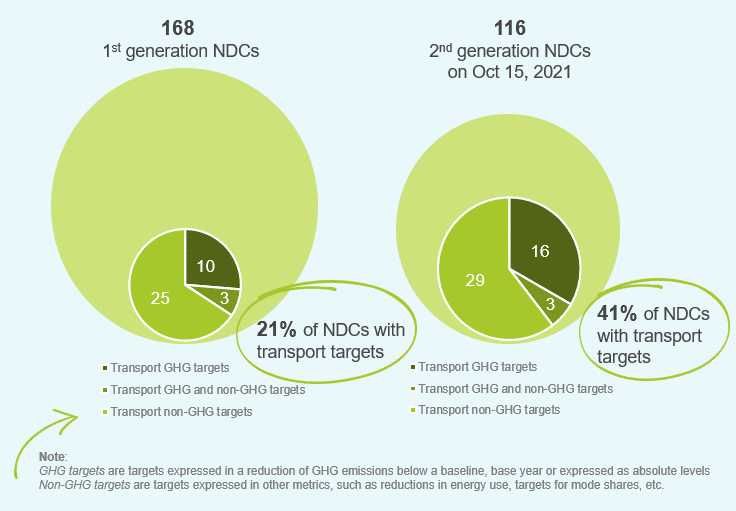
The 26th Conference of the Parties (COP26) to the UNFCCC in Glasgow starts these days and a whole series of countries have published new commitments to reduce their greenhouse gas (GHG) emissions or announced climate neutrality by 2050.
In all these commitments, the transport sector must play an important role. Transport is the second-most polluting sector of all, and when looking at the last decade no turning point is in sight: between 2010 and 2019, emissions of the sector grew by 19% – with this dramatic increase transport is the fastest growing fossil fuel combustion sector worldwide.
These figures demonstrate that enhanced climate action in transport is not a topic of future talk, but of action today. For limiting global heating to well below 2 degrees Celsius, transport needs to be featured prominently in countries nationally determined contributions (NDCs) to the objectives of the Paris Agreement as well as their long-term strategies (LTS). But is that the case? Just in time for COP26, GIZ together with the SLOCAT Partnership on Sustainable, Low Carbon Transport, published a joint analysis of the role of transport in 116 new and updated NDCs and 33 LTS (as of 12 October 2021).
Across the board, the following trend was observed in the policy documents: More and more countries are addressing the transport sector in their NDCs and LTS in comparison to the first NDCs submitted in 2015 and 2016. Back then, only 21% of NDCs contained transport targets, whereas in the updated and second NDCs, the share of NDCs featuring a transport target almost doubled to 41%. And not only do more NDCs and LTS feature transport targets. The number of NDCs that contain measures for mitigating transport emissions rose from 66% to 78%.

The number of NDCs containing adaptation measures related to transport almost doubled as well. It rose from 22% of first NDCs to 41% of second or updated NDCs.
This is positive news. However, the countries with transport targets account only for 8% of total transport CO2 emissions. Many of the big emitters still lack climate targets for transport. Governments need to consider that offsetting transport emissions in other sectors won’t be possible forever – real mitigation is indispensable.
In addition, freight transport is very often not addressed at all, and aviation and shipping are only integrated in the rarest of cases. Yet, freight transport accounts for 40% of transport GHG emissions and, thus, must not be ignored.
In summary, although the transport sector is increasingly integrated into NDCs, there is still a long way to go! GIZ’s six action recommendations help policy makers enhance ambition by:
For more information on transport’s role in new NDCs and LTS check out GIZ’s brochure on key insights around the topic.
The Advancing Transport Climate Strategies (TraCS) project is implemented by GIZ and funded by the International Climate Initiative (IKI) of the German Ministry for the Environment, Nature Conservation and Nuclear Safety (BMU).